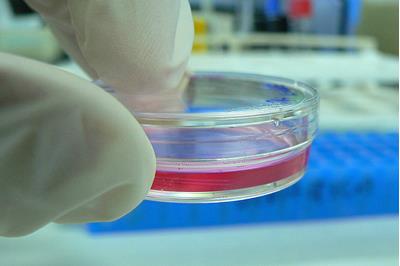
Sunday November 26, 2017
 Growing
Growing
Up until now, there have basically been two different ways to start growing marijuana: seeds and clones. And though both have their benefits for different situations, they also both involve some pretty major hurdles, too. For example, seeds, though less likely to come infested with pests and contaminants, take longer to grow, yield variable results, and may not even produce buds if they’re not female (not to mention the attention the little buggers need to thrive).
Conversely, clones may cut a few weeks off the cultivation period and guarantee the exact same genetics from which it came, but they easily become infested, take up more space when accounting for the mother plant, and require attention and other resources just to stay alive until they are ready to flower. And while it’s been easy enough to make due with these options for the sake of consumers, there may be a better way to preserve cannabis genetics and get growing on your time: tissue culture propagation.
What is plant tissue culture propagation?
When you think of tissue propagation, you might imagine some sort of mad scientist’s laboratory, filled with random jars of biological items floating in mysterious liquid and you wouldn’t be that far off, honestly. But, unlike the mad scientist in the movies, propagating cannabis via tissue culture is not dreary or unsettling in anyway.
In fact, well-maintained cannabis tissue cultures may be a viable way to preserve strain genetics indefinitely while requiring minimal space and effort.
Cannabis tissue propagation works by preserving a very small piece of the plant in a special medium containing nutrients and growth regulating chemicals where it can remain indefinitely. Once the grower is ready to plant the tissue, the medium is changed to a different mixture of nutrients to encourage root growth and prepare the plant for cultivation. Though the process requires careful sanitization practices, when handled correctly, cannabis tissue cultivation could be used to:
Preserve plant genetics
You are not a copy of your parents nor are marijuana seeds a copy of theirs. Even seeds from stressed out mother plants may produce variable phenotypes which makes it difficult to maintain strain consistency. Though clones work well to preserve genetics for a few generations, potency and yield will start to wain which means the same strains you love today may not be here 20 years from now. But by propagating cannabis from tissue, exact plant genetics can be maintained indefinitely allowing for true strain preservation for many years to come.

Increase harvest yield
We love our mothers, but they take up a lot of space. By removing the mother plant from the equation, growers can utilize the extra space to flower more plants. This translates to a heftier harvest and more profit for growers and dispensary owners.
Improve cultivation efficiency
Maintaining a marijuana grow requires diligent attention. Plants need to be fed, watered and regularly monitored to ensure they remain healthy and free of pests. But the sterile nature of tissue propagation coupled with its low-maintenance up-keep makes the process much more efficient and sustainable overall. Just change the medium out every few weeks and store under moderate lighting for an extended photoperiod. Under these conditions, the tissue will grow and multiply, but will not produce roots until transferred to the appropriate grow medium.
Minimize waste
Cannabis can be propagated from even the tiniest group of cells as little as a centimeter or two, in fact which means that any part of a mother plant can be used to create the cultures. Unlike clones which need to be taken from a sturdy stock potentially weakening the mother, tissue cultures can be taken from the smallest branches which may otherwise be nothing more than compose. This means less waste (and trauma to mama) and more potential from every plant.
Tissue Culture and the Future of Cannabis Cultivation
The appeal of cannabis tissue culture cannot be ignored. Though plant tissue propagation has been practiced for more than 100 years, its use in cannabis cultivation is somewhat new and requires some serious science-ing to make it work. Though this could prove challenging for the average home grower who may struggle with sanitary environments and the proper mix of chemical media, it may be worth it for commercial growers who could reap the cost benefits of this technique in a matter of months.
Cannabis tissue cultures also make international cannabis branding easier because they allow for the transportation of specific cannabis strains across state lines since no cannabinoids are present on the specimen at that time.
This means that the exact same strain you purchase in Colorado could be available in California, too, rather than just a variation of the strain’s genotype.
Some companies like Tweed and Stratos have already begun experimenting with cannabis tissue culture propagation with tremendous results. It’s only a matter of time before more companies join in on the party.
The amount of time it takes to multiply cannabis tissue is only a fraction of what it takes to produce and maintain clones from a mother plant. By converting to tissue cultures, cultivators can scale out their grows in a matter of months rather than years. Not only that, dispensaries and breeders will be able to maintain their best strains indefinitely, providing the consistency their customers crave.
What do you think of cannabis tissue propagation? Would you try it at home?







